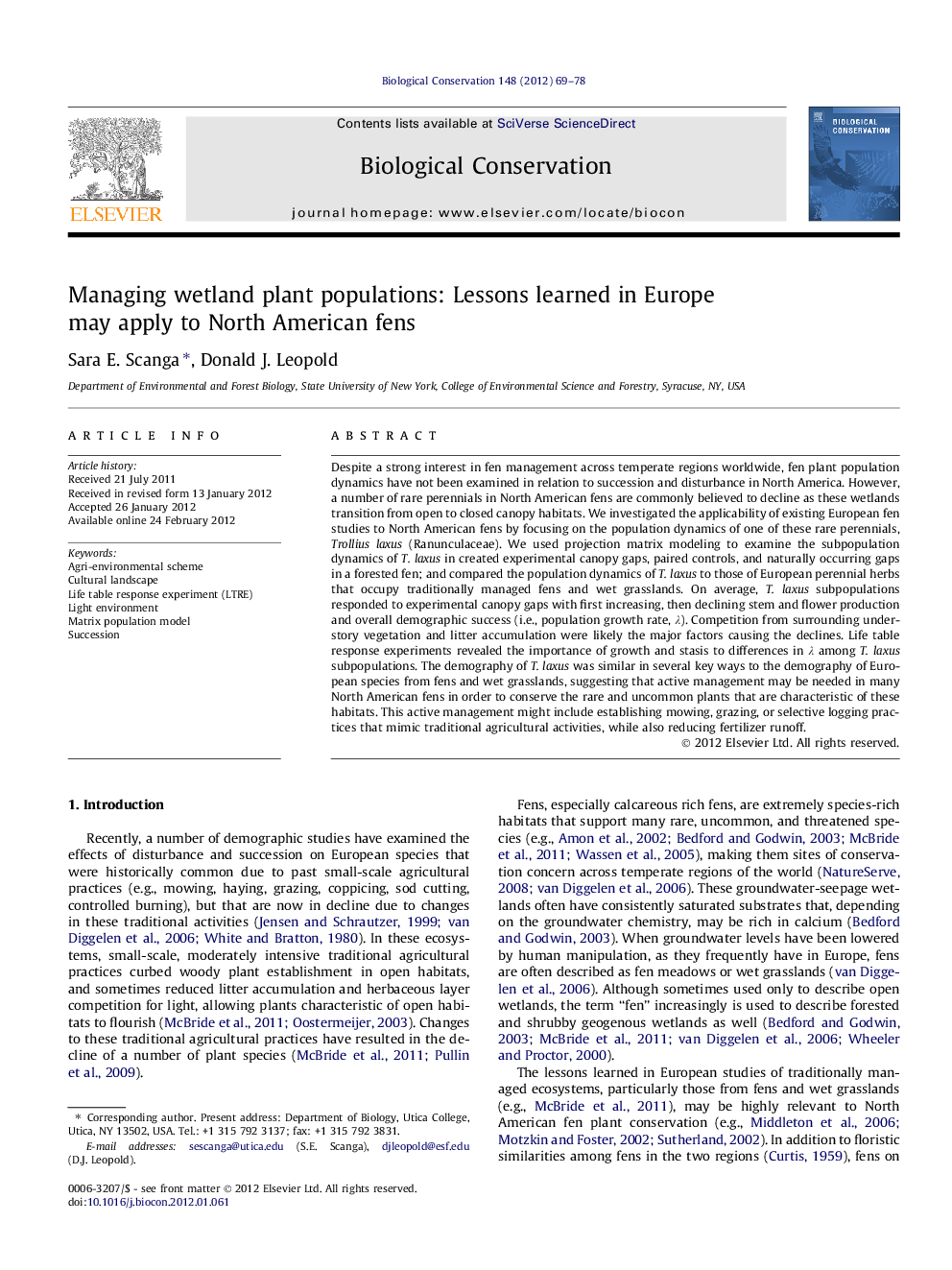| Article ID | Journal | Published Year | Pages | File Type |
|---|---|---|---|---|
| 4385495 | Biological Conservation | 2012 | 10 Pages |
Despite a strong interest in fen management across temperate regions worldwide, fen plant population dynamics have not been examined in relation to succession and disturbance in North America. However, a number of rare perennials in North American fens are commonly believed to decline as these wetlands transition from open to closed canopy habitats. We investigated the applicability of existing European fen studies to North American fens by focusing on the population dynamics of one of these rare perennials, Trollius laxus (Ranunculaceae). We used projection matrix modeling to examine the subpopulation dynamics of T. laxus in created experimental canopy gaps, paired controls, and naturally occurring gaps in a forested fen; and compared the population dynamics of T. laxus to those of European perennial herbs that occupy traditionally managed fens and wet grasslands. On average, T. laxus subpopulations responded to experimental canopy gaps with first increasing, then declining stem and flower production and overall demographic success (i.e., population growth rate, λ). Competition from surrounding understory vegetation and litter accumulation were likely the major factors causing the declines. Life table response experiments revealed the importance of growth and stasis to differences in λ among T. laxus subpopulations. The demography of T. laxus was similar in several key ways to the demography of European species from fens and wet grasslands, suggesting that active management may be needed in many North American fens in order to conserve the rare and uncommon plants that are characteristic of these habitats. This active management might include establishing mowing, grazing, or selective logging practices that mimic traditional agricultural activities, while also reducing fertilizer runoff.
► Projection matrix modeling of subpopulations of the rare fen perennial Trollius laxus. ► Compared subpopulations under created canopy gaps, paired controls, and naturally occurring gaps. ► Gaps caused T. laxus subpopulation success to first increase, then decline. ► T. laxus population dynamics similar to European fen species. ► Active management likely needed in North American fens.
